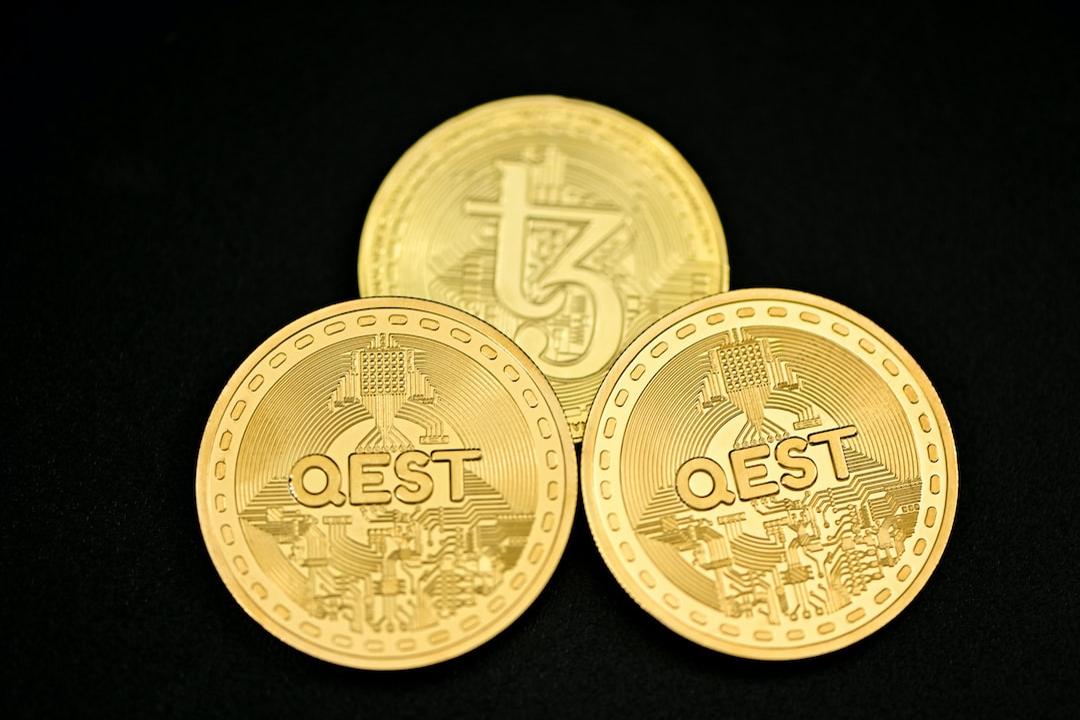Cryptocurrency Staking [2025]: Locations for Staking ADA, XTZ, DOT, ALGO, and ETH
IMPORTANT NOTICE
Finbold may provide educational material to inform its users about crypto and digital assets. This content is for general information only and does not constitute professional advice or training certification. Content is provided “as is” without any warranties. Users must conduct their own independent research, seek professional advice before making investment decisions, and remain solely responsible for their actions and decisions.
RISK WARNING: Cryptocurrencies are high-risk investments and you should not expect to be protected if something goes wrong. Don’t invest unless you’re prepared to lose all the money you invest. By accessing this Site, you acknowledge that you understand these risks and that Finbold bears no responsibility for any losses, damages, or consequences resulting from your use of the Site or reliance on its content. Click here to learn more.
This article will focus on the Proof of Stake (PoS) consensus mechanism and how blockchain investors can profit from cryptocurrency staking. In the coming sections, we will define and highlight the various staking models, some coins utilizing staking together with their returns on investment (ROI), and some leading staking-as-a-service providers.
Best Crypto Exchange for Intermediate Traders and Investors
Invest in cryptocurrencies and 3,000+ other assets including stocks and precious metals.
0% commission on stocks – buy in bulk or just a fraction from as little as $10. Other fees apply. For more information, visit etoro.com/trading/fees.
Copy top-performing traders in real time, automatically.
eToro USA is registered with FINRA for securities trading.

When Bitcoin (BTC) launched back in 2009…
When Bitcoin (BTC) launched back in 2009, it introduced the distributed ledger concept known as the blockchain. The distributed ledger was the missing ingredient that would make digital currencies a reality.
The idea behind the distributed ledger is to have copies of the blockchain held by multiple computers (called nodes) in different locations. It’s a system in which a simple majority of the nodes get to vote on what goes into the ledger. Whenever there is a conflict between copies of the ledger, the version held by the majority of the nodes becomes the ‘true’ version.
In essence, the nodes have to get into an agreement or a consensus of the true version of the ledger.
The process through which the consensus is reached varies between various projects and networks. For instance, Bitcoin (BTC) and Ethereum (ETH) use Proof-of-Work (PoW) consensus, while EOS and Cardano (ADA) use the Proof of Stake (PoS). In this definitive guide on cryptocurrency staking, we’ll focus on the latter consensus.

Cryptocurrency Staking
Cryptocurrency staking is the process of locking up a portion of your assets to qualify to earn passive income in the form of staking rewards (interest), participate in the governance, and verify the transactions within a certain decentralized network.
In some ways, this is similar to how a traditional company works. Shareholders have stakes within a company, which gives them the right to vote in the management and directorship of a company. Staking rewards can vary from 5% to 30% APR depending on which coin is being staked.
Cryptocurrency staking is a way to incentivize good behavior within the blockchain network. If a staker acts in a way that is contrary to community policies, they risk losing their staked assets.
Staking can be done through various methods – individually, within a pool, or using a delegate. The staking policies of each network determine the efficacy of any of these staking methods. As we will discuss later in this article, there are various models of staking, and some are similar to the three methods outlined here, while others allow for the use of more than one or all the staking methods.

Proof-of-Stake vs. Proof-of-Work
In the introductory section above, we mentioned that Bitcoin uses a Proof of Work (PoW) consensus mechanism. Ethereum, the second-largest blockchain network after Bitcoin in terms of market capitalization, currently uses PoW. However, Ethereum’s core developers are currently working on a core upgrade that will see Ethereum migrate from PoW to Proof of Stake (PoS).
And it’s not just Ethereum. Several other projects being launched today are also shunning PoW for PoS, which begs the question – is PoS better than PoW. How do the two consensus mechanisms compare?

Security
In terms of security, the PoW networks have proven to be a mixed bag. On the one hand, major networks such as Bitcoin, Litecoin, and Ethereum are extremely secure. This is because they have amassed a substantial hash rate that it is not economically viable for a malicious party to attack these networks. The hash rate is a measure of the amount of computing power miners within the network are contributing to keeping the network secure.
Unfortunately, smaller networks using PoW are prone to the infamous 51% attacks. Ethereum Classic is one such network that was attacked thrice in August 2020. In these attacks, a malicious party accumulates at least 51% of the network’s hash rate, which means that they can control the generation of blocks.
PoS networks don’t have to worry about 51% attacks. This does not mean that they can’t happen. It only means that just like well-established PoW networks, PoS networks are almost immune to these attacks. Given that all nodes within the PoS network have to stake a minimum amount of native coins or tokens, it will be foolish to try to jeopardize the value of your investment.
Scalability
Scalability is the ability of a network to increase its capacity to handle more transactions per second. This is a particular fault for the PoW networks such as Bitcoin and Ethereum. These networks can only process five and fifteen transactions per second, respectively.
PoS, on the other hand, is much more scalable. For instance, if Ethereum finally upgrades to version 2.0, it will process as many as 10,000 transactions per second (TPS). EOS, another popular PoS network, can process close to 4,000 TPS. These figures are several-fold higher compared to their PoW counterparts.
Environmental Impact
There is an ongoing debate about the environmental impact of mining PoW coins such as Bitcoin. According to the latest figures shared through the University of Cambridge’s bitcoin electricity consumption index website, Bitcoin miners are estimated to consume 27 terawatt-hours (TWh) a year.
And this is only the average estimate. The upper band of that estimate is 488 TWh. Arguably, a bulk of the energy used to mine PoW coins ends up wasted because only one of the miners is rewarded for their efforts.
Another debate related to energy consumption is that the bulk of the electricity used for mining is sourced from non-renewable resources. We are talking coal, natural gas, and nuclear energy. Environmentalists argue that the use of these limited resources leads to their depletion and contributes to global warming.
Scalability, security, and environmental impact
are not the only differences between PoW and PoS blockchain networks. However, these are arguably the main selling points for staking coins. PoW also has its pros, but we will focus on PoS in this guide.
Now that you understand a little about why staking matters beyond just profitability…
Now that you understand a little about why staking matters beyond just profitability, let’s briefly discuss the various models of PoS networks. These models dictate how stakeholders participate within the network, and sometimes, it affects profitability.
- Pure Proof of Stake (PoS)
- Delegated Proof of Stake (dPoS)
- Masternodes
- Federated Byzantine Agreement
- Dual token model
A plain or pure PoS network allows stakeholders to directly verify transactions and partake in the network’s governance without delegating responsibilities. In this model, the number of coins a stakeholder has goes towards determining their likelihood of being selected to create the next block. Coins utilizing a pure PoS consensus mechanism include Algorand (ALGO) and Ethereum 2.0.
This is a cryptocurrency staking model in which the network stakeholders vote for a delegation of stakeholders responsible for transaction verification, block generation, and network governance. This model is utilized in several PoS networks, including EOS, Tron (TRX), and Icon (ICX).
As the name alludes, Masternode is a blockchain server with more functionality compared to the normal nodes that only hold the full copy of the network ledger. It can be designed to offer additional functionality such as anonymizing transactions for privacy-oriented coins, partaking in governance tasks, and verifying transactions. The stakeholders maintain Masternodes. PoS coins utilizing masternodes include Dash, PIVX, SysCoin (SYS), and Energi (NRG).
In this staking model, pioneered by Ripple then later adopted by Stellar, there is no reward to create and run a node. At least not from the network itself. In the Stellar implementation, node creators and maintainers are actual firms and individuals that require a cross-border payment solution. The incentive is to have a functional network through which to process your transactions. Once a party has created a node and invested in the infrastructure to run the node, they effectively have a stake in the network.
Most notably used by NEO network– the “Chinese Ethereum” network. NEO was nicknamed after Ethereum due to similarity in functionality. However, while Ethereum currently uses the PoW consensus mechanism, NEO uses the delegated Byzantine Fault Tolerance (dBFT) model to achieve consensus.
NEO uses a staking model to incentivize governance participation. Two tokens are used within the NEO network. NEO, which is the native token for value transfer and GAS for payment of transaction fees. NEO stakeholders are also responsible for voting for their governance council – a 21 member council.
For every successful block created on the NEO blockchain, 5 GAS tokens are rewarded and split amongst the council members, NEO token holders, and the network voters.
Staking Requirements
Staking requirements vary from network to network as various networks demand different levels of participation from their stakeholders. However, the two most common requirements to start staking in most networks are capital and technical know-how.
Capital
Most PoS networks demand a minimum investment from their stakeholders who wish to verify transactions, in governance, or both. This is a normal requirement, but not all coins have this as mandatory. Some networks such as Cardano have no minimum entry balance to qualify as a validator.
A majority, however, make it mandatory to hold a minimum balance of the native token. For instance, Ethereum requires stakers to hold at least 32 ETH coins to become validators.
Some networks require massive investments to join validator ranks. Dash, for instance, requires a minimum of 1,000 DASH coins to run a masternode. At current market rates, this represents a $330,000 investment.
Technical Considerations
The technical bit of staking might be a tall order for most beginners. Perhaps that is why staking-as-a-service (SaaS) providers are becoming more popular. We will be highlighting some of the most popular SaaS providers later in this article. These services help offload the stakeholder’s burden of having to deal with the technical requirements.
Best Crypto Exchange for Intermediate Traders and Investors
Invest in cryptocurrencies and 3,000+ other assets including stocks and precious metals.
0% commission on stocks – buy in bulk or just a fraction from as little as $10. Other fees apply. For more information, visit etoro.com/trading/fees.
Copy top-performing traders in real time, automatically.
eToro USA is registered with FINRA for securities trading.

30+ million Users worldwide
Get Started
eToro is a multi-asset investment platform. The value of your investments may go up or down. Your capital is at risk. Don’t invest unless you’re prepared to lose all the money you invest. This is a high-risk investment and you should not expect to be protected if something goes wrong. Take 2 mins to learn more.
